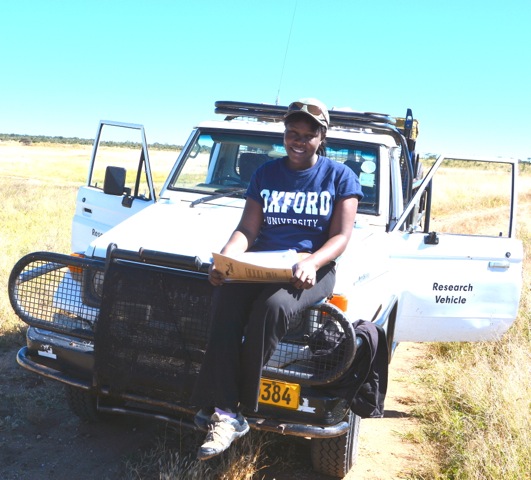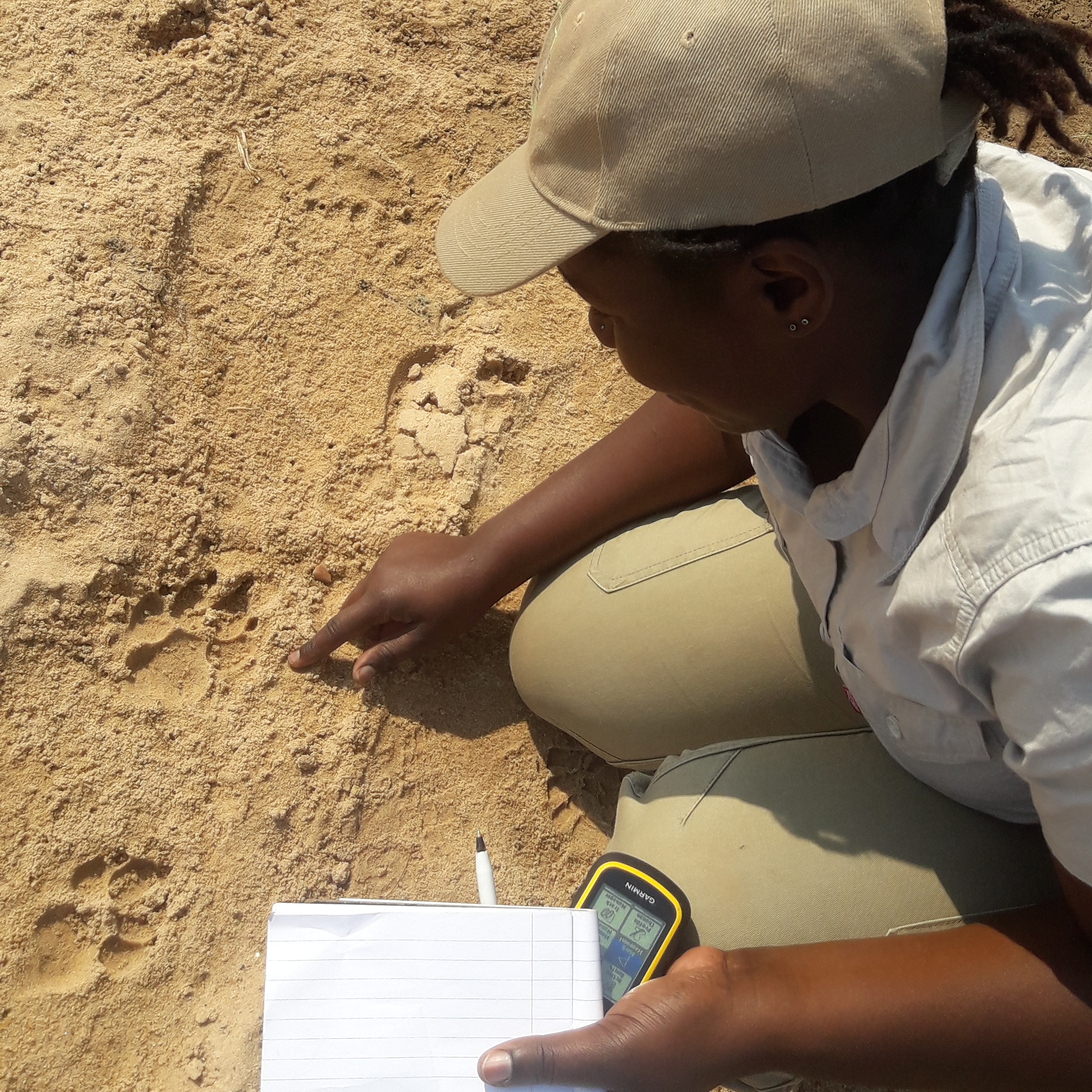Dr Moreangels Mbizah
Alumni
My journey in the field of wildlife conservation began in 2009 during my Masters research project with the Lowveld Wild Dog Project (LWDP) in South-East Lowveld, Zimbabwe. My study looked at the diet and overlap in diet of four large carnivores (African wild dog, Lion, Hyena and Leopard) and the implications for the conservation of the African wild dog. I joined WildCRU in 2012 as a Postgraduate Diploma student. This opportunity equipped me with important theoretical and practical skills that are proving essential as I continue moving forward in the field of wildlife conservation.
Upon completion of the Diploma, I joined the Hwange Lion Project as an intern from January to August 2013. It was during this time in Hwange that I developed ideas for my DPhil thesis, I then returned to Oxford in October 2013 to start my DPhil. The focus of my doctoral thesis was to assess the effect of resource abundance and distribution, on the ecology and social behaviour of social animals using the example of a social large carnivore, the African lion. I carried out my study in Hwange National Park, which is a semi-arid landscape where resources are heterogeneously distributed in both space, and time and this permits us to perform natural experiments on the effects of resource distributions. As the apex predator in African savannah ecosystems, understanding how the abundance and dispersion of resources influences lion ecology and social behaviour is important for management and conservation actions.
I finished my DPhil and graduated in 2018, and stayed on at WildCRU for 6 months working on my manuscripts before going back to Zimbabwe. My lion work in Hwange National Park, was in 2018 featured in a National Geographic short film “One Woman’s Remarkable Journey to Protect Lion”. In 2019 I was awarded with a prestigious TED Fellowship and I gave a TED talk “How community led conservation can save wildlife” at the TED Conference in April 2019 in Vancouver, Canada. When I returned back to Zimbabwe after my time at Oxford, I founded Wildlife Conservation Action a conservation organisation whose mission is to build the capacity of local communities to protect and coexist with wildlife, while improving community livelihoods. I am also the Sebungwe Focal Area Working Group Leader in the KAZA Carnivore Conservation Coalition and my role is crucial for supporting and coordinating the activities of several consensus driven conservation initiatives in the Sebungwe landscape to reduce poverty, improve community livelihoods, reduce human-wildlife conflict, promote coexistence, reduce poaching, provide alternative livelihoods and to connect the fragmented Sebungwe landscape. I am also working as a consultant on various conservation and community development projects in Zimbabwe and other African countries.
Selected Publications
M.M., Farine. D.R., Valeix. M., Hunt. J.E., Macdonald D.W and Loveridge. A.J. Effect of ecological factors on fine-scale patterns of social structure in African lions. Journal of Animal Ecology, in press.
M.M., Valeix. M., Macdonald D.W and Loveridge. A.J. (2019) Applying the Resource Dispersion Hypothesis to a fission-fusion society: A case study of the African lion (Panthera leo). Ecology and Evolution, ece3.5456
Ferry, N., Mbizah, M.M., Loveridge, A.J., Macdonald, D.W., Dray, S., Fritz, H., Valeix, M. (2020) Can an herbivore affect where a top predator kills its prey by modifying woody vegetation structure. Oecologia DOI: 1007/s00442-020-04617-9 (shared first co-authorship)
Dickman, A.J., Johnson, P.J., ‘t Sas-Rolfes, M., Di Minin, E., Loveridge, A.J., Good, C., Sibanda, L., Feber, R., Harrington, L., Mbizah, M.M., Cotterill, A., Burnham, D and Macdonald,D.W (2018). Is there an elephant in the room? A Response to Batavia et al. Conservation Letters, e12603
M.M., Steenkamp, G & Groom, R.J. (2016). Evaluation of the applicability of different age determination methods for estimating age of the endangered African wild dog Lycaon pictus. PLOS One 11 (10), e0164676
M.M., Groom, R.J., Jourbert. D & Jourbert. L (2014). Implications of African wild dog (Lycaon pictus) denning on the density and distribution of a key prey species: addressing myths and misperceptions. Biodiversity Conservation 23:1441-1451
M.M, Marino, J & Groom, R.J (2012). Diet of four sympatric carnivores in Save´ Valley Conservancy, Zimbabwe: implications for conservation of the African wild dog (Lycaon pictus). South African Journal of Wildlife Research 42:94-103








